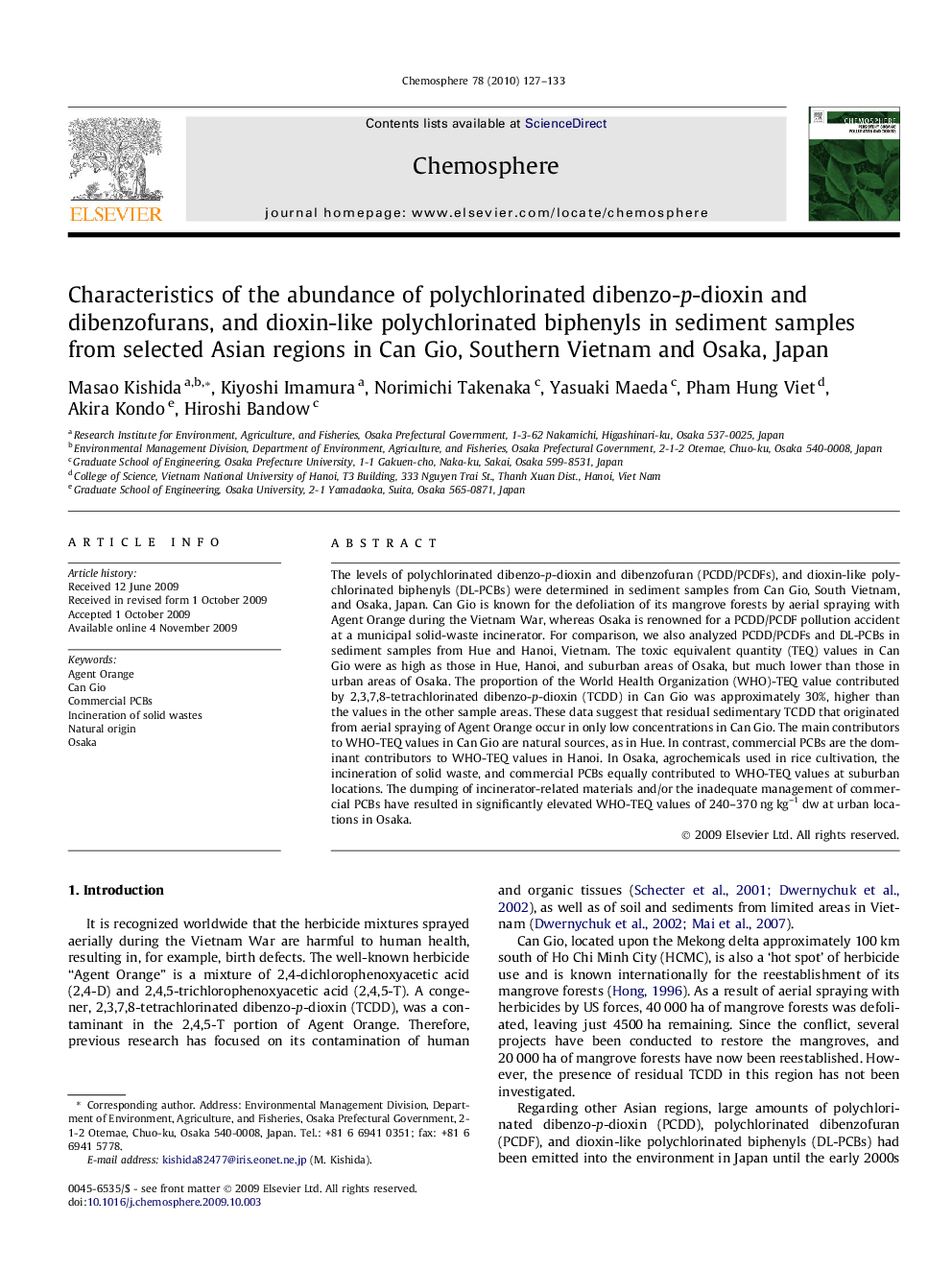| Article ID | Journal | Published Year | Pages | File Type |
|---|---|---|---|---|
| 4412052 | Chemosphere | 2010 | 7 Pages |
The levels of polychlorinated dibenzo-p-dioxin and dibenzofuran (PCDD/PCDFs), and dioxin-like polychlorinated biphenyls (DL-PCBs) were determined in sediment samples from Can Gio, South Vietnam, and Osaka, Japan. Can Gio is known for the defoliation of its mangrove forests by aerial spraying with Agent Orange during the Vietnam War, whereas Osaka is renowned for a PCDD/PCDF pollution accident at a municipal solid-waste incinerator. For comparison, we also analyzed PCDD/PCDFs and DL-PCBs in sediment samples from Hue and Hanoi, Vietnam. The toxic equivalent quantity (TEQ) values in Can Gio were as high as those in Hue, Hanoi, and suburban areas of Osaka, but much lower than those in urban areas of Osaka. The proportion of the World Health Organization (WHO)-TEQ value contributed by 2,3,7,8-tetrachlorinated dibenzo-p-dioxin (TCDD) in Can Gio was approximately 30%, higher than the values in the other sample areas. These data suggest that residual sedimentary TCDD that originated from aerial spraying of Agent Orange occur in only low concentrations in Can Gio. The main contributors to WHO-TEQ values in Can Gio are natural sources, as in Hue. In contrast, commercial PCBs are the dominant contributors to WHO-TEQ values in Hanoi. In Osaka, agrochemicals used in rice cultivation, the incineration of solid waste, and commercial PCBs equally contributed to WHO-TEQ values at suburban locations. The dumping of incinerator-related materials and/or the inadequate management of commercial PCBs have resulted in significantly elevated WHO-TEQ values of 240–370 ng kg–1 dw at urban locations in Osaka.
